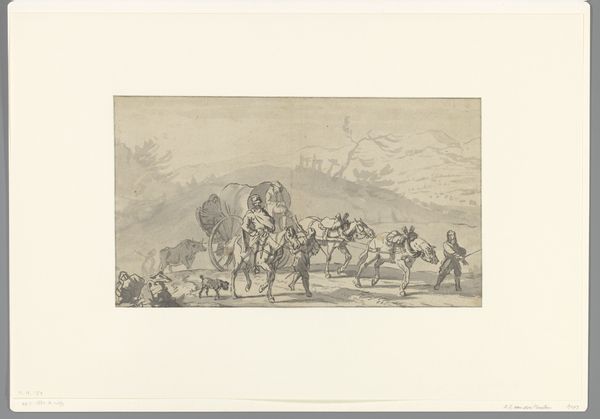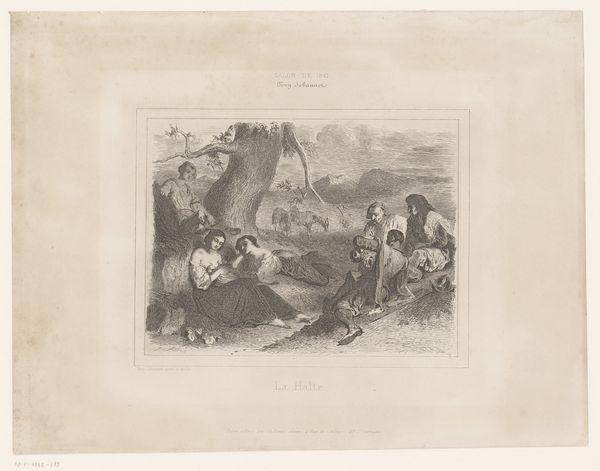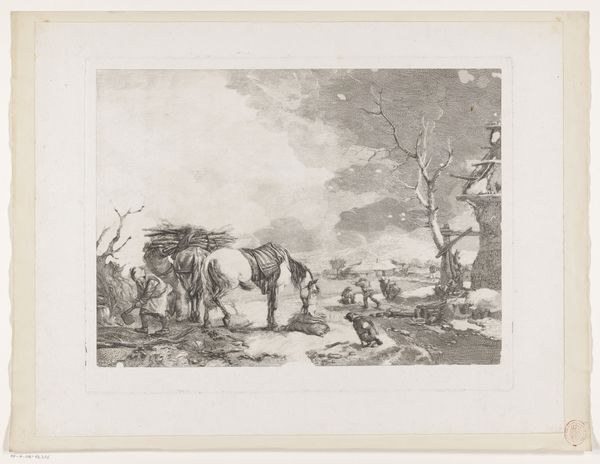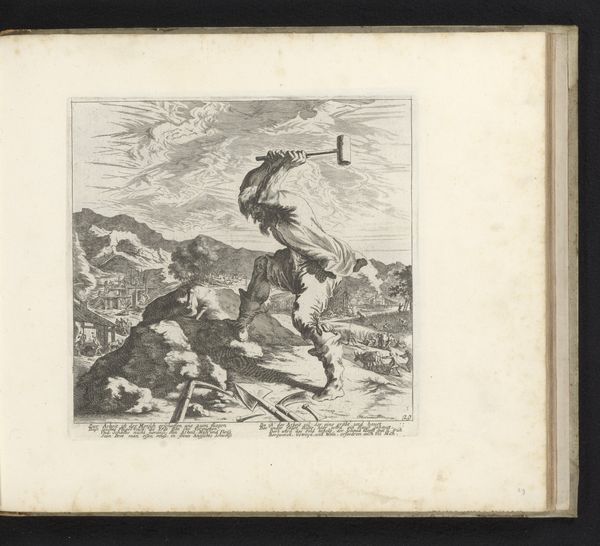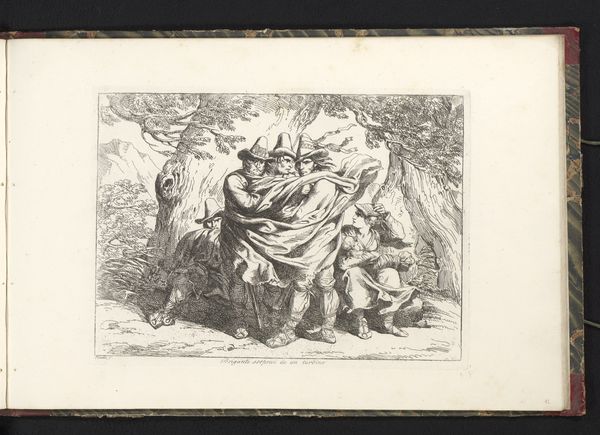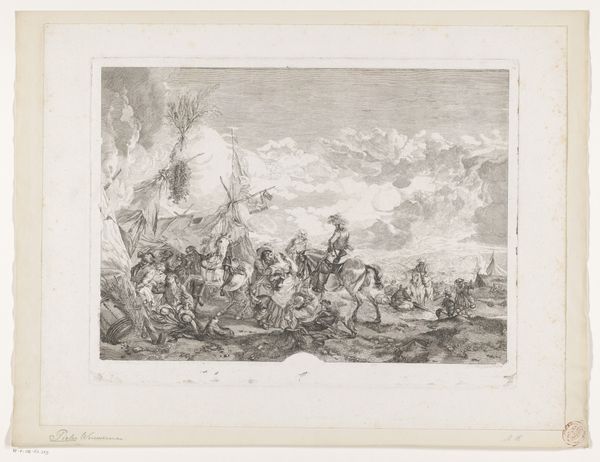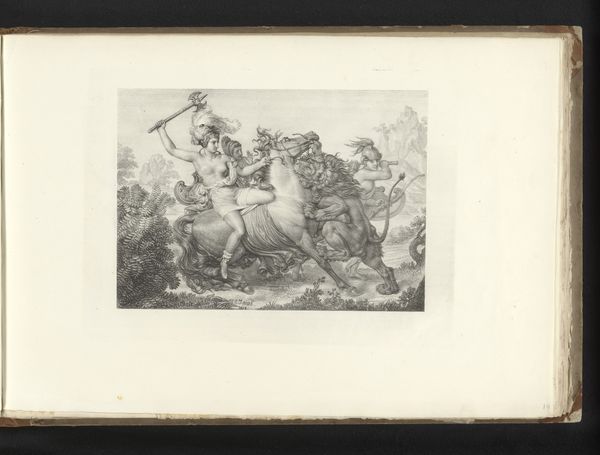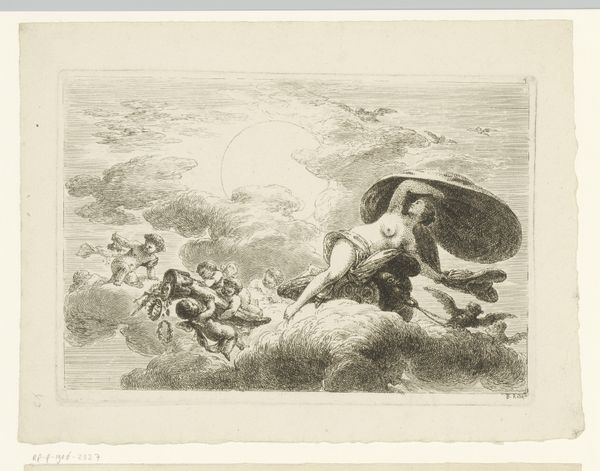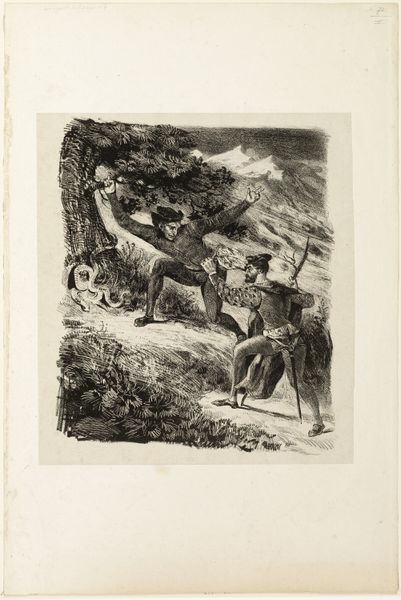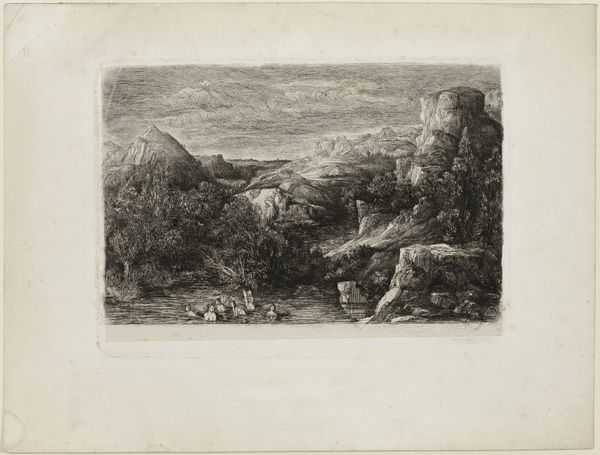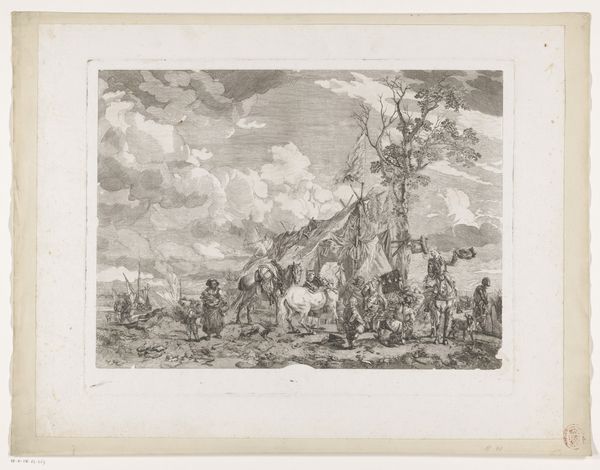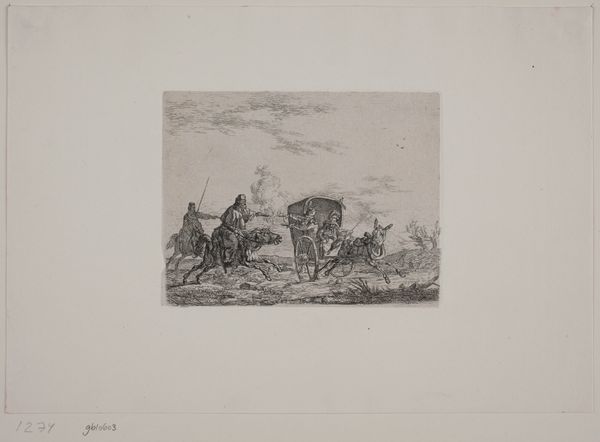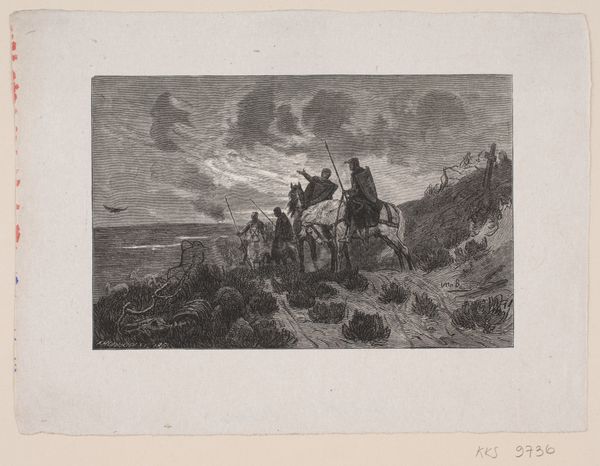
Cavalry Charging, from the first issue of Specimens of Polyautography Possibly 1801 - 1803
0:00
0:00
Dimensions: 237 × 320 mm (image/primary support); 375 × 490 mm (secondary support)
Copyright: Public Domain
Editor: Here we have Johann Conrad Gessner's "Cavalry Charging" from around 1801-1803, a lithograph, etching, and drawing on paper. It’s incredibly dynamic, you can almost feel the horses thundering across that bridge. What strikes you most about it? Curator: What interests me is the process and its relation to accessibility. Lithography, especially in its early forms like this polyautograph, offered a relatively inexpensive way to reproduce images. Consider Gessner’s choice to depict this energetic cavalry charge. How might the accessibility of printed images showing military action have impacted the consumption and understanding of warfare at the time? Editor: That's fascinating. I hadn't thought about how printing methods influenced access. Do you think the 'action' depicted could be considered propaganda? Curator: It's possible. Mass production inherently alters reception; is this meant for historical record, inspiration, or recruitment? The context of production matters too - what were the prevailing attitudes toward war and military service at the time this print was made and distributed? Who were the consumers of this image? Editor: I see your point. Examining it through the lens of production and consumption offers a whole new perspective beyond just aesthetic appreciation. Curator: Exactly. By examining the materials, the process, and its socio-historical environment, we begin to uncover how the image functions within a network of power, labour, and exchange. Editor: This makes me see that a print like this isn't just a depiction but also an object with a role in shaping public perception. Curator: Precisely. And questioning the boundaries of high art versus mass production changes the game in analyzing what artwork "means".
Comments
No comments
Be the first to comment and join the conversation on the ultimate creative platform.
